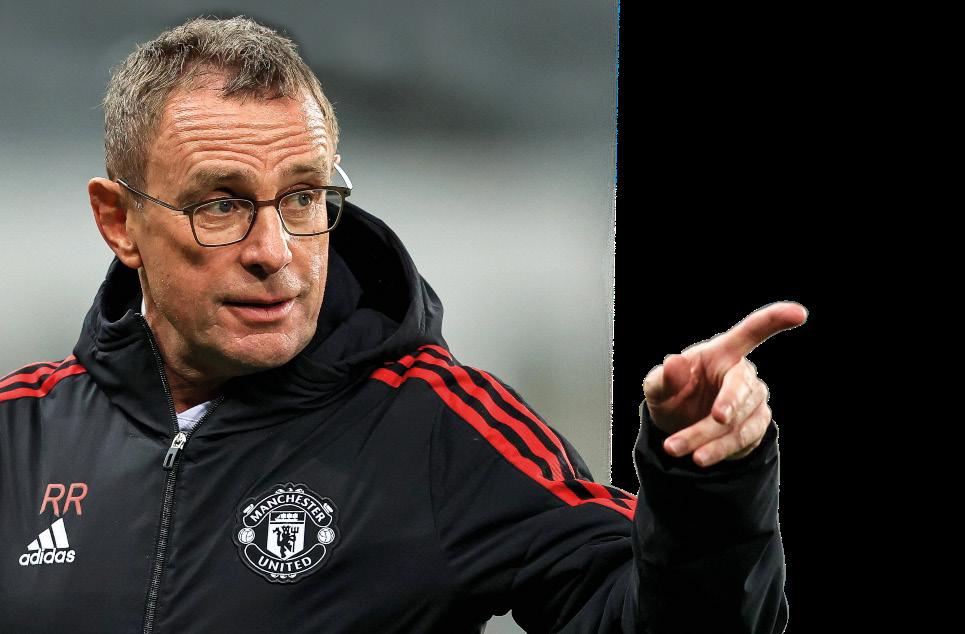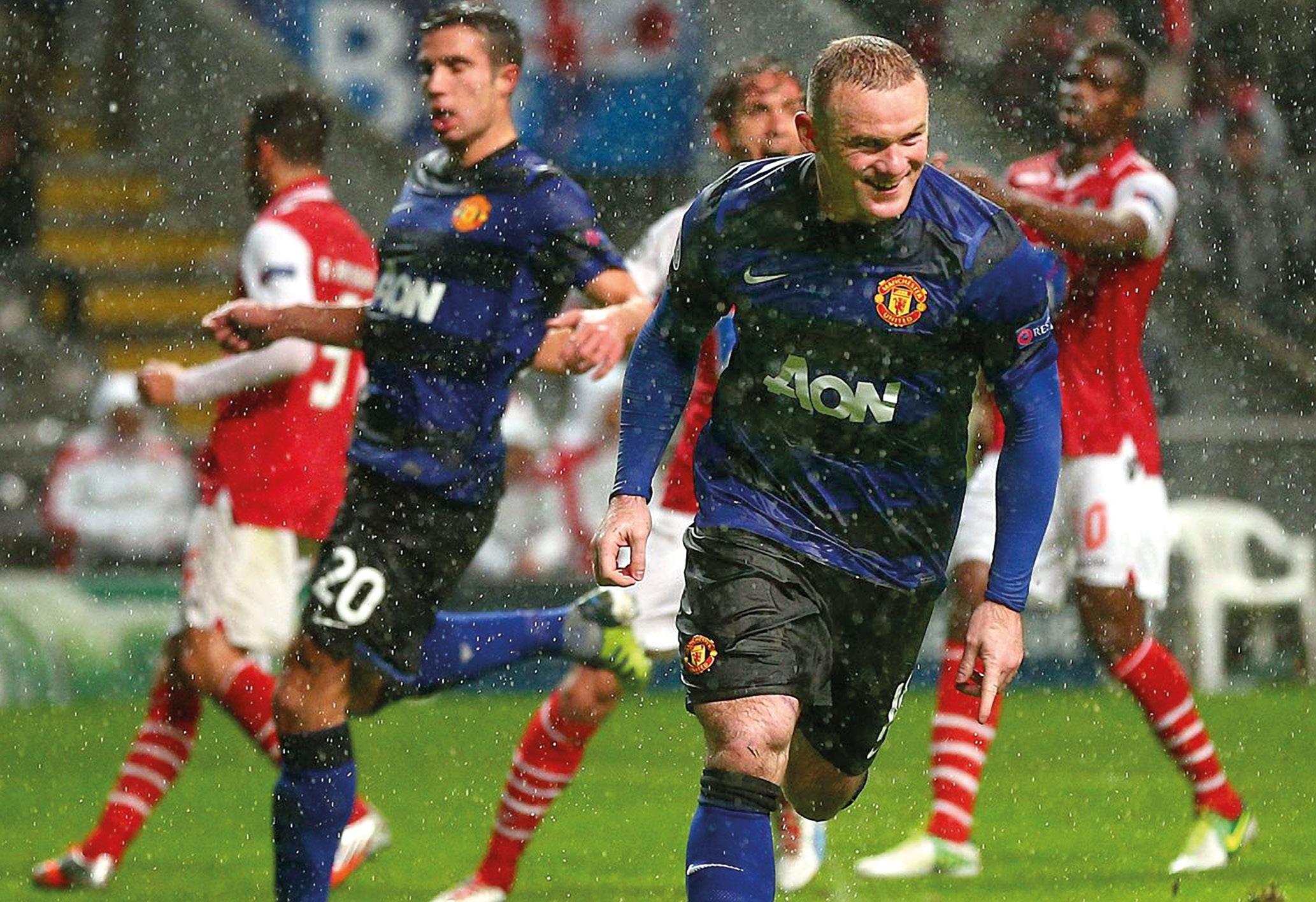
5 minute read
THE SAD TALE OF JIMMY McINNES
by Iain McCartney
Searching for the burial or cremation details of former Manchester United players is a long, often boring, not to mention frustrating task. However, it is also rewarding when finding a new addition to the database.
There are numerous stumbling blocks along the way, the main ones being the lack of details surrounding the exact place of death, which doesn’t mean that the individual was buried or cremated there, and also the exact date of death. Sites such as Ancestry, whilst being a help, are also frustrating, as they have details of a number of individuals that I am looking for, but they do not give the exact date, nor the place, the latter simply being given as a district. For example, you will find ‘Barton’ for a Manchester death.
So, due to the lack of details surrounding the players that I am still looking for, plus coming up against a brick wall on numerous occasions, I started to trawl through the list of war‑time guest players, where there are a host of interesting characters, such as Stanley Matthews and Alex Herd [David’s father], while others, not so familiar, conjure up interesting stories.
One such individual with a more than interesting story behind him is Jimmy McInnes.
As you all know, I formed The Manchester United Graves Society a couple of years or so ago and the search continues today for the resting place of anyone with a United connection, be it player or official, with the 400 mark edging closer.
Not content with individuals who were signed by the club, I have also diversified into war‑ time guest players, where some notable names such as Stanley Matthews, Harry Catterick, Alec Herd and Peter Doherty appear. There is one other that I have recently added and he is Jimmy McInnes. Never heard of him I hear you all echo, so read on.
Jimmy McInnes was born not too far up the road from me at Kilwinning in Ayrshire and began his playing career with the lesser lights of South Beach, Dalry Thistle and Ardeer Recreation, living between his birthplace and the Ayrshire town of Dalry.
He was a player of exceptional promise, two footed, strongly-built, with a more than decent shot to match and had numerous admirers when he played in the Churches League and was considered one of the finest players Ayrshire produced. An exceptional statement, considering the numerous players who came from that area. University, and signed on the dotted line for Third Lanark and was to miss only one game during his time with them.
With the Cathkin Park club, he represented the city in their annual match against Sheffield during the 1937-38 season, as well a Second Division championship medal in 1934-35 and Scottish Cup runners-up medal in 1936. make fifty‑one appearance for the Merseyside club.

Season 1938-39 saw him come face to face with United for the first time, lining up against them at Anfield on September 7th, alongside a certain Matt Busby in the home sides 1-0 victory. The cover of the Liverpool programme and team pages are shown here.
His performances in the Scottish League did not go unnoticed and in March 1938, Liverpool paid out £5,000 for the twenty-six year old, a fair sum in those days, to take him south, and he made an immediate impression, scoring on his debut against Brentford. In all, he was to He was in the Liverpool side for the return fixture on the final day of the season.
On page two of the United programme, it mentions “Much of their stability is due to their polished half‑back work, particularly on



McInnes is in the back row, far left, Busby is obviously the man with the ball at his feet.
Jimmy McInnes can also be found in the Liverpool line‑up in the programmes for the 1939‑40, 1943‑44 and 1944‑45 seasons,





the right flank where Matt Busby, formerly with Manchester City, has proved one of the best captures they ever made. Busby is now an established favourite with the Merseyside crowds, and his cool, constructive style is often held up by the critics as an object lesson.”
Of his half-back partner, it was written: “On the other wing flank, they have McInnes, another Scot with a neat constructive ability.”
On this occasion, United won 2-0.
It was in season 1944-45 that we pick up the Jimmy McInnes story as a Manchester United player, as he played in the opening two fixtures of that season against Everton, at Goodison Park and Maine Road.
When the Second World War came to a close, Jimmy returned to Anfield, where he took up a post on the club’s administration side, going on to be appointed club secretary in 1955. Liverpool’s rise in fortune, lifting the Second Division title in 1961-62 and the First Division title in 1963-64, along with the FA Cup in 1964-65. He had of course been around when Liverpool lifted the First Division title in the first post‑war season of 1946-47.
Those successful days of the sixties put considerable pressure on McInnes and it was said that he would be at his desk by 7.00am most mornings, often not leaving until around midnight, if he actually left at all, as he often spent the night sleeping on the floor of his Anfield office.
The championship success of 1963-64 saw Liverpool in the European Cup and on the night of May 4th 1965, Liverpool defeated Inter Milan 3‑1 at Anfield, amid much celebration, but those cheers were to turn to tears less than twenty-four hours later as the news filtered through that Jimmy McInnes had been found hanging from the beams of the Archway turnstile underneath the Kop.
At the inquest that followed, his wife was to say that on the morning of the Milan match “he was exceptionally tired and that some mornings he could hardly drag himself out of bed. It took him four attempts, but he said “I have got to get there – there is work to be done”. The verdict was ‘suicide while his mind was unbalanced’.











